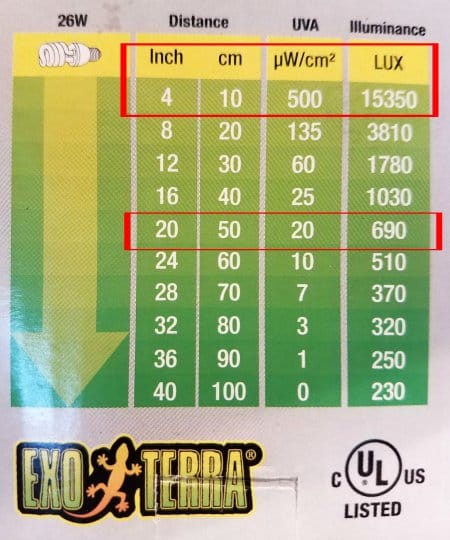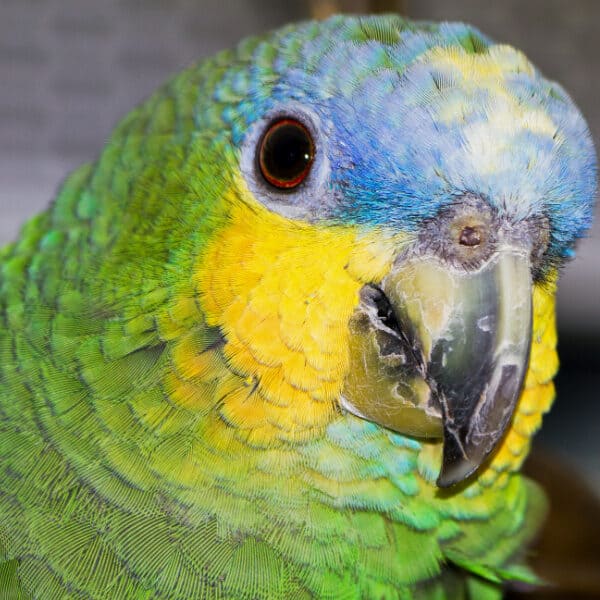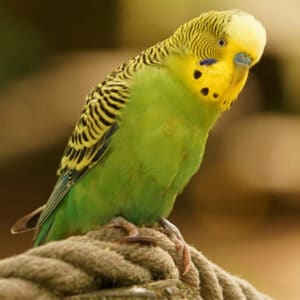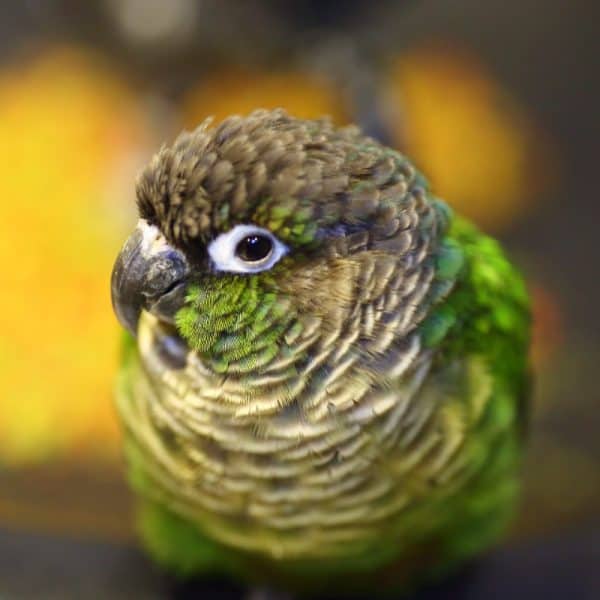
Calling All Avian Veterinarians and PhD’s – What’s the Real Deal With Vitamin D Birds and Light?
Last Updated on by Mitch Rezman
Calling all veterinarians and PhD’s
to answer this one simple question
(none of you return my emails or respond to my Facebook questions)
How does artificial light really aid enable vitamin D/D3 syntheses in birds?
Have there been any studies done where a bird known to have a vitamin D3 deficiency by blood testing was exposed to 12 hours of light every day for a certain period of time and then tested to see if vitamin D3 increased with no change in a bird’s diet?
I’m as confused as my readers. One just asked:
“Do you have a source for light not affecting D3 production in birds? This seems to be the only webpage making that claim”
In my post Birds and full spectrum lighting. We got it wrong 8/6/15. My own confusion about whether the amount of light has or has no bearing on Vitamin D synthesis in birds is very obvious.
10,000 of anything vs 700 of anything having no impact on any biological or mechanical process is a hard theory to accept – please read on.
I talk a lot about the inverse square law of light which just seem to throw a curveball (Go Cubs!) to, well everyone.
So let me put this law of physics in a more meaningful dimension, an image.
This is the back panel of an EXO TERRA bulb. These bulbs were designed with reptiles in mind.

Typically they are placed about 6 inches above perhaps a bearded dragon who sits on a rock without moving for six hours a day.
Even the most sedimentary of birds moves up and down its cage throughout the day seeking food, water and engaging with various toys.
As you can see this is a 15350 lumen bulb. Let’s place that bulb 6 inches over the cage and assume the bird spends a lot of time on it sleeping perch (hopefully a soft rope perch about a foot from the top of the cage.
That means the bird is receiving approximately 700 lumens out of the 15350 lumens the bulb is emitting
As a counterpoint, direct outside daylight in the summertime averages somewhere in the neighbourhood of 10,000 foot candles. This is equal to 10,000 lumens per square foot.
Which begs the question. When all the “experts” are talking about using artificial light to help process the production of vitamin D in birds – what is the minimum amount of lumens needed?
Is 700 lumens enough to help the Vitamin D synthesization process? Is UVA and UVB necessary? Has anyone tested for this?
Now that we’ve established how little measurable light the bird is actually receiving whilst being exposed to indoor artificial light, let’s explore the mechanics of vitamin D3 synthesis in birds.
Unlike reptiles, birds have feathers covering their entire body. Even a small bird like a budgie can have 3000 to 5000 feathers.
For the bird to hopefully get the biological benefit of vitamin D3 synthesis they must access the uropygial gland (locted above the base of the tail) and put some preening oil on their beak.
How much can that be .1 milliliter? (there’s 29.57 milliliters in an ounce) You never see a “gob”.
Now they apply this oil to their feathers whilst preening. The oil will transfer to the bird skin by whatever feathers touch the bird’s skin.
So what all the “experts” are saying = here’s one example
Dr. Karen Becker states:
This oil contains a compound that produces vitamin D when exposed to the sun’s ultraviolet rays. So as your bird grooms under an ultraviolet light source, it’s actually mixing up a healthy batch of vitamin D on its feathers.
As your bird re-grooms his feathers coated in oil, he ingests vitamin D. The vitamin D in his system will then be converted by his kidneys and liver to active vitamin D3 (cholecalciferol).
Feathers? So all these feathers are producing Vitamin D – with only 700 lumens of light?
From Wikipedia we learn:
The (uropygial) gland is invariably present at embryonic stages, whereas it can be vestigial in adults of certain orders, families, genera and species.
Some or all species in at least nine families of birds lack a uropygial gland, mostly the ones unable to fly or the ones that produce powder down for feather maintenance.
These include kiwis (Apterygidae), emu (Dromaiidae), ostriches (Struthionidae), rheas (Rheidae), cassowaries (Casuariidae), mesites (Mesitornithidae), bustards (Otididae), pigeons and doves (Columbidae), amazon parrots (Psittacidae), frogmouths (Podargidae), and woodpeckers (Picidae).
These birds typically find other means to stay clean and dry, such as taking a dust bath.
Researchers have been unable to correlate the presence or absence of the uropygial gland with factors such as distribution, climate, ecology, or flightlessness. Read more:
End Wikipedia – Before we go further,
What if I’m right about this vitamin D synthesization issue, why even bother with artificial light?
“We want a light source close to the cage top on a timer set for 12/12 hours on and off (not respecting daylight savings time) signaling to the bird the start of day and end of the day.
This simple hack has been known to kill behavioral triggers like plucking, screaming, biting, and other negative hormonal activity
Now let’s recap:
Re: So as your bird grooms under an ultraviolet light source, it’s actually mixing up a healthy batch of vitamin D on its feathers.
The question here is Dr. Becker’s description of how vitamin D is transferred from the feathers without touching the skin.
BTW – Vitamin D, for example, plays a vital role in the regulation of calcium and phosphorus metabolism, which are key to optimizing a bird’s skeletal system.
Please, no really PLEASE can someone answer with precision, “can 700 lumens of artificial light assist with the avian vitamin D/D3 synthesis?
Written by Mitch Rezman
Approved by Catherine Tobsing.
Your zygodactyl footnote
The first veterinarian or scientist to post a data-driven answer to this question will win $100 worth of amazing bird stuff for the bird rescue of his or her choosing.
(opinions don’t count)
Author Profile
Latest entries
 The Traveling BirdJune 26, 2025Can You Name 5 Parrot Species That Are Living Wild in the USA?
The Traveling BirdJune 26, 2025Can You Name 5 Parrot Species That Are Living Wild in the USA? Bird BehaviorJune 26, 2025How is it Parrots Are Problem Solvers Social Animals and Even Use Tools?
Bird BehaviorJune 26, 2025How is it Parrots Are Problem Solvers Social Animals and Even Use Tools? Bird & Parrot AnatomyJune 25, 2025How a Tiny Chemical Modification Makes Parrots Nature’s Living Paintings
Bird & Parrot AnatomyJune 25, 2025How a Tiny Chemical Modification Makes Parrots Nature’s Living Paintings PigeonsJune 20, 2025How Do Parrots Thrive in Cities Outside Their Native Habitats?
PigeonsJune 20, 2025How Do Parrots Thrive in Cities Outside Their Native Habitats?
This Post Has 7 Comments
Leave a Reply
You must be logged in to post a comment.



Bert Sirkin
20 Oct 2017I’m wondering if birds can even absorb vitamin D from sunlight/artificial light. According to what I’ve read, humans absorb vitamin D from sunlight through their skin – a bird has very little skin exposed. Can a bird even absorb vitamin D from sunlight or full-spectrum lighting??
WindyCityParrot
20 Oct 2017Hi Bert your answer is in the blog post
best
mitchr
Bert Sirkin
22 Nov 2017You indicate that birds get the vitimin D from the uropygial gland – but Amazon parrots don’t have a uropygial gland. So, I don’t see how natural light can help an Amazon parrot.
From Wikipedia: “Some or all species in at least nine families of birds lack a uropygial gland, mostly the ones unable to fly or the ones that produce powder down for feather maintenance.[2] These include kiwis (Apterygidae), emu (Dromaiidae), ostriches (Struthionidae), rheas (Rheidae), cassowaries (Casuariidae), mesites (Mesitornithidae), bustards (Otididae), pigeons and doves (Columbidae), amazon parrots (Psittacidae), frogmouths (Podargidae), and woodpeckers (Picidae).” (https://en.wikipedia.org/wiki/Uropygial_gland)
WindyCityParrot
22 Nov 2017You’re exactly right Bert. If you read between the lines that’s how it’ “supposedly” happens. My point is humans should stop trying to trick mother nature for vitamin D production in birds using light – it doesn’t work, yes in spite of what veterinarians will tell you
Over the past 2 years I’ve reached out to zoo admins, vets, PhD’s seeking one documented study where Light has shown to help synthesize Vitamin D in a vitamin D deficient bird.
Josee Birmingham, the director https://hari.ca in conjuntion with http://www.ovc.uoguelph.ca/hsc/en/aboutovchealthsciences/MakeAReferral.asp
Has done her own testing and is complete agreement with me but there’s not enough data to support a paper
To your point artificial light is extremely important to help keep our bird circadian clock synchronized. We can reduce and or eliminate all sorts of hormonal behavior with full spectrum lighting 6 inches over a bird cage.
the light should be on a timer set to 12/12 hours on/off which is the equivalent of an equatorial light cycle instead of the confusing North
American light cycle that change daily
This article will provide even more insights to the purposes light has for our birds https://windycityparrot.com/blog/2010/04/14/lighting-and-your-bird/
Have a happy and safe holiday
best
mitchr
John Loretta Ruglass
16 Jan 2018Hi Mitch,
I can’t answer your question about 700 lumens providing enough light to produce Vitamin D but I do have an observation to share. Our Female SI Eclectus, Mia, has broken her beak 3 times in the last 2 years to the point of exposed bone and bleeding! Our Vet in Cherry Hill NJ has recommended exposing her to UVB to help with Vitamin D absorption. A year ago when she broke her beak for the 2nd time he said the same thing about the UVB and we did not do it. Last fall, September, it happened again and I quickly went and purchased a bulb and placed it out side her cage and leave it on from 7am to 8pm. The one thing I have noticed is her beak as it has grown has a different appearance, a line between the old and the new growth with the UVB! I hope this means it is getting stronger but I have no way to measure.
Gigi Giacomara
23 Feb 2018Regarding your question re Dr. Karen Becker’s statement: The question here is Dr. Becker’s description of how the vitamin D is transferred from the feathers without touching the skin?
The bird INGESTS the UV-exposed Vitamin D while preening with the oil obtained from the uropygial gland, after which the kidneys and liver act on the Vitamin D, to create D3. Dr. Becker states this in the statement you quoted from her.
WindyCityParrot
23 Feb 2018The 2 problems with this Gigi are Amazons, Hyacinth macaws and other species have no uropygial gland and no one has defines the amount of time/lumens necessary for vitamin D# production.
Everyone is guessing